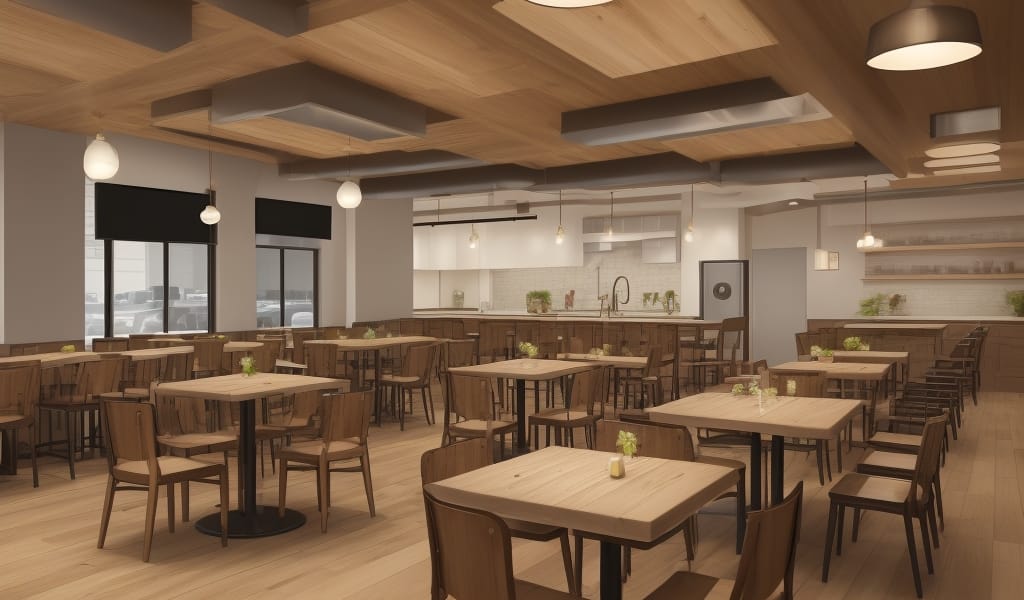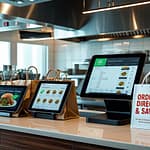Key Takeaways:
- Identify your target audience and tailor your menu, decor, and marketing strategies accordingly.
- Ensure compliance with all local health, safety, and licensing regulations before the restaurant opening.
- Develop a comprehensive business plan including budget, operational costs, and projected revenues.
- Invest in hiring and training quality staff, emphasizing customer service and efficiency.
- Plan and execute a pre-launch marketing campaign to generate buzz and attract potential customers.
Opening a New Restaurant? Use This Pre-Launch Checklist
Get everything ready before opening day
Opening a new restaurant is an exciting venture, but it also requires meticulous planning and preparation. Before you welcome your first guests, there’s a host of tasks you need to complete to ensure a smooth and successful launch. From finalizing permits and licenses to training your staff and creating buzz in your community, a comprehensive restaurant opening checklist can make all the difference. In this guide, we’ll walk you through essential steps and actionable advice that will help you confidently navigate your restaurant’s pre-launch phase.
1. Finalize Your Permits, Licenses, and Insurance
Before opening your doors, you must ensure that all necessary documentation and legal requirements are fully completed. Missing any required permits or licenses can lead to costly delays or even temporary closure.
Secure Essential Permits and Licenses
- Food service permit
- Health department inspection approval
- Liquor license (if applicable)
- Business license
- Occupancy permit
Obtain Adequate Insurance Coverage
Consult with an insurance professional familiar with the restaurant industry to secure the right coverage, including:
- General liability insurance
- Workers’ compensation insurance
- Property and equipment insurance
- Food spoilage coverage
- Liquor liability insurance (if applicable)
2. Complete Your Restaurant Interior and Exterior Setup
Your restaurant’s appearance and functionality greatly influence your guests’ first impressions and overall dining experience. Ensure that your interior and exterior spaces are attractive, safe, and welcoming.
Interior Setup Checklist
- Arrange tables, chairs, and booths for optimal guest comfort and server efficiency.
- Install lighting fixtures that complement your restaurant’s ambiance.
- Set up dining utensils, plates, glassware, and linens.
- Ensure restrooms are clean, stocked, and accessible.
- Implement proper signage (restrooms, exits, and safety notices).
Exterior Setup Checklist
- Install visible, attractive signage with clear brand messaging.
- Ensure parking lots and walkways are safe, clean, and well-lit.
- Establish an inviting outdoor dining or waiting area (if applicable).
- Verify that all entrances and exits are clearly marked and accessible.
3. Equip and Test Your Kitchen Thoroughly
The kitchen is the heart of your restaurant, and it’s critical that you have everything in place before opening day. An organized, well-equipped kitchen ensures smoother operations and higher-quality dishes.
Kitchen Equipment and Supplies
- Check all cooking equipment (ovens, stoves, grills, fryers) for proper operation.
- Verify refrigeration and freezer units maintain appropriate temperatures.
- Ensure dishwashing equipment functions correctly and passes health inspections.
- Stock pantry and storage areas with staple ingredients and essential supplies.
- Organize kitchen tools (knives, cutting boards, utensils) for optimal efficiency.
Culinary Testing and Menu Development
- Conduct thorough recipe testing and menu tastings with your culinary team.
- Finalize portion sizes, plating techniques, and menu pricing.
- Create standardized recipe cards for consistency and training.
- Prepare and print menus with accurate descriptions and pricing.
4. Implement Effective Inventory and Supplier Management
Reliable suppliers and efficient inventory systems are essential to avoiding costly shortages and waste. Establish clear processes early to streamline your supply chain.
Selecting and Managing Suppliers
- Evaluate multiple suppliers based on quality, reliability, pricing, and service.
- Negotiate favorable terms and delivery schedules.
- Develop contingency plans in case of supplier disruptions or shortages.
Inventory Management Practices
- Set up inventory tracking systems or software to monitor stock levels.
- Establish clear procedures for receiving, storing, and rotating inventory.
- Train staff on proper inventory handling to minimize food waste and spoilage.
- Schedule regular inventory audits to maintain accuracy.
5. Hire and Train Your Restaurant Staff
Your staff significantly impacts the guest experience. Investing time in thorough hiring and comprehensive training ensures your team is ready to deliver exceptional service from day one.
Hiring Your Team
- Create clear job descriptions and requirements for each role.
- Conduct structured interviews to evaluate candidates effectively.
- Check references and conduct background checks as necessary.
Staff Training Essentials
- Develop comprehensive training manuals covering service standards, menu knowledge, and operational procedures.
- Conduct hands-on training sessions to familiarize staff with restaurant layout and equipment.
- Simulate real-world scenarios to enhance service readiness and problem-solving skills.
- Establish clear policies on food safety, hygiene, and customer service expectations.
6. Plan and Execute a Marketing and Promotion Strategy
Effective marketing and promotions will create excitement around your launch and attract customers from day one. Leverage multiple channels to build anticipation and establish your brand.
Pre-Launch Marketing Activities
- Create a professional website showcasing your restaurant’s concept, menu, and story.
- Establish a strong social media presence on platforms like Instagram, Facebook, and TikTok.
- Engage with local media, bloggers, and influencers to generate coverage.
- Plan special opening promotions or events to attract initial customers.
Industry Example: Successful Launch Promotion
A popular downtown bistro generated significant buzz by offering a limited-time, exclusive tasting event for local influencers and food bloggers before their grand opening. This strategy helped them build a strong online presence and generated word-of-mouth excitement, resulting in a fully booked opening week.
7. Conduct a Soft Opening to Refine Operations
A soft opening is an invaluable opportunity to test your restaurant’s operations in a controlled environment. It enables you to identify challenges and adjustments necessary before the official grand opening.
Soft Opening Tips
- Invite a limited number of guests, such as friends, family, and local community members.
- Gather constructive feedback on food quality, service speed, and overall experience.
- Adjust workflows, staffing, and menu items based on observations and feedback.
- Use this opportunity to reinforce staff training and build team confidence.
Conclusion
Opening a new restaurant is an ambitious undertaking, but careful preparation can significantly enhance your chances of success. By diligently following this comprehensive restaurant opening checklist, you can confidently navigate the complexities of launching your business. From securing essential permits and licenses, setting up your space, equipping your kitchen, and training your team, to effectively marketing your restaurant and conducting a productive soft opening, each step is crucial in ensuring your restaurant thrives from the very first day.






Comments
Be the first to comment on this article.